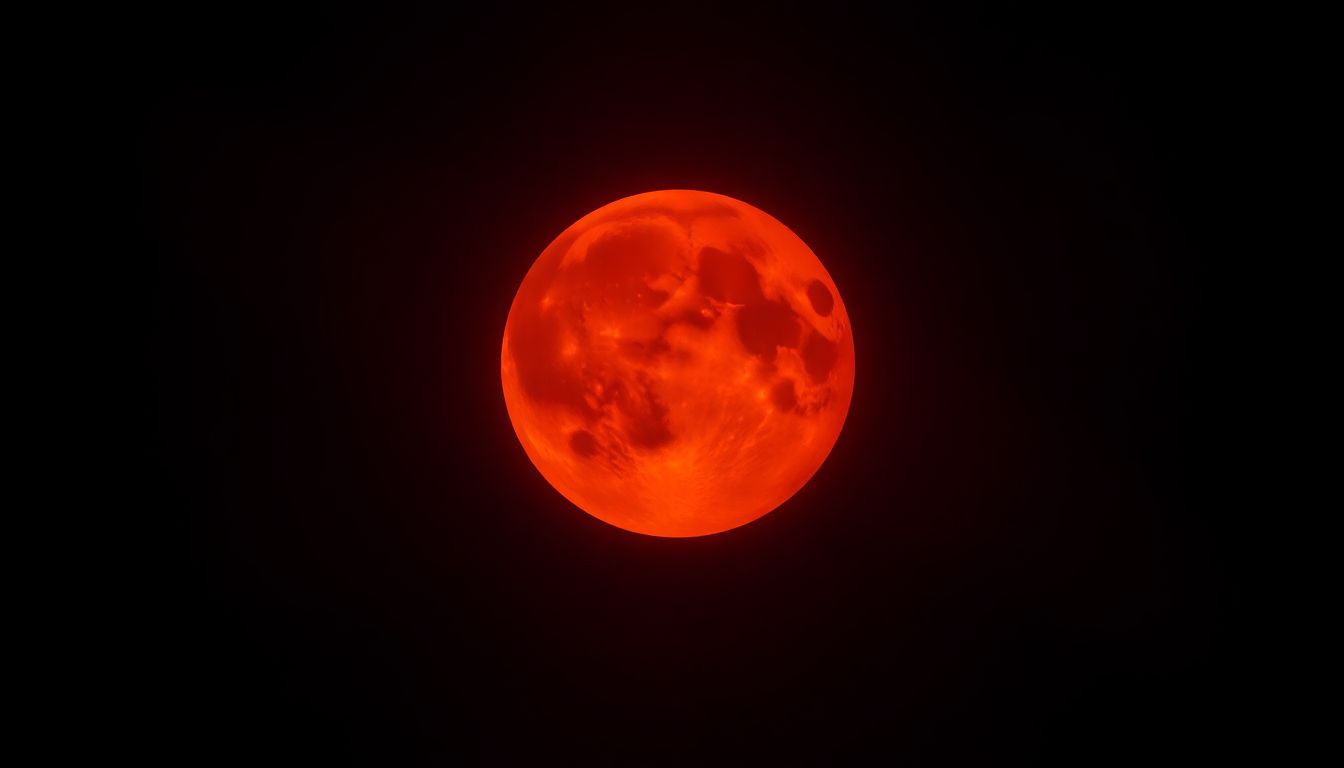
Blood Moon Total Lunar Eclipse Tonight: Witness the Celestial Spectacle!
Tonight, the sky will put on a show. Imagine a moon bathed in a deep, eerie red. It's a blood moon, and its mystique has captivated people for ages. This spectacle is actually a total lunar eclipse! This celestial event is happening tonight. Get ready to learn all about this incredible sight, when to see it, and why it’s so special.
What is a Blood Moon (Total Lunar Eclipse)?
A blood moon isn't magic; it's science! It’s a total lunar eclipse. When the Earth passes between the sun and the moon, it casts a shadow. This shadow turns the moon a stunning reddish color. Let's examine the eclipse and its causes.
The Science of a Lunar Eclipse
Think of it like a cosmic dance. The sun, Earth, and moon all line up. Earth is in the middle. The Earth blocks sunlight. This sunlight usually lights up the moon. Instead, Earth casts a shadow. This shadow is what causes the lunar eclipse.
Why is it Red? The Atmospheric Explanation
Why red, not black? Earth’s atmosphere is the reason. Sunlight is made of all colors. Blue light scatters away. Red light bends around the Earth. This red light reaches the moon! This effect is Rayleigh scattering. This same scattering causes red sunsets.
Lunar Eclipse vs. Solar Eclipse: Key Differences
Lunar eclipses are safe to view. You don't need special glasses. Solar eclipses are different. You do need eye protection. Lunar eclipses happen more often too. More people can see them. Solar eclipses need special equipment to view safely.
Viewing Tonight's Blood Moon: Timing and Visibility
Want to see tonight's blood moon? It's easy! Go outside, look up, and enjoy. You don't need anything special. Here are the times for different phases.
Exact Timing of Each Phase: From Penumbral to Totality
The eclipse happens in phases. The penumbral phase is first. This is hard to notice. Next comes the partial eclipse. You'll see Earth's shadow creep across the moon. Totality is the best part. The moon turns red! Then it reverses. Here are approximate times, but confirm for your time zone.
| Phase | Time (EST) | Time (PST) |
|---|---|---|
| Penumbral Start | 9:00 PM | 6:00 PM |
| Partial Start | 10:00 PM | 7:00 PM |
| Totality Start | 11:00 PM | 8:00 PM |
| Totality Ends | 11:30 PM | 8:30 PM |
| Partial Ends | 12:30 AM | 9:30 PM |
| Penumbral Ends | 1:30 AM | 10:30 PM |
Best Viewing Locations and Conditions
Get away from city lights. Find a dark spot. Parks or fields work great. Check the weather forecast. Clear skies are best. Clouds will block the view.
Do You Need Special Equipment?
No, you don't need anything! Your eyes work just fine. Binoculars can enhance the view. A telescope will give you a closer look. But they aren't needed to see the blood moon.
The Cultural and Historical Significance of Blood Moons
Blood moons have fascinated cultures. It happened for thousands of years. It has deep roots in history and myth. People had different stories for the event.
Ancient Myths and Legends
Some cultures saw blood moons as bad omens. They thought it was a sign of disaster. Others saw them as a time of change. Some thought gods were angry. Each culture had its own story.
Blood Moons in Modern Interpretations
Today, some connect blood moons to astrology. Others see them in movies and books. While superstitions fade, the wonder continues. The awe still inspires us. It’s a reminder of the cosmos.
Tips for Photographing the Blood Moon
Want to capture the blood moon? It takes practice. Some equipment will help you. Here's how to take amazing photos.
Camera Settings and Equipment Recommendations
Use a tripod! It keeps the camera steady. A telephoto lens helps zoom in. Set your ISO low to reduce noise. Try an aperture around f/8. Shutter speed depends on the light. Experiment to find the best settings.
Composition and Framing Techniques
Don’t just point and shoot. Think about the composition. Include trees or buildings. It adds context. Try different angles. Make the shot interesting.
Post-Processing Tips for Enhancing Your Images
Edit your photos! Adjust the brightness. Increase the contrast. Sharpen the image. Use photo editing software. Just don't overdo it. Keep it natural.
Beyond the Blood Moon: Other Celestial Events to Watch For
The sky is always changing. Many other events happen too. Keep looking up! Here are a couple cool things to watch for.
Meteor Showers: A Shower of Shooting Stars
Meteor showers are amazing. They happen when Earth passes through debris. You'll see shooting stars. Check the calendar for upcoming showers. Find a dark sky.
Planetary Alignments: A Celestial Gathering
Sometimes, planets line up. You can see them all together. It's a rare and beautiful sight. Keep an eye on astronomy news. You will know when the next one happens.
Conclusion
Tonight's blood moon total lunar eclipse is a must-see. It is a blend of science, history, and wonder. Remember the timing. Find a dark spot. Take it all in. Go outside and experience it! Share your photos and experiences online. Use #BloodMoon and #LunarEclipse. Enjoy the show!

No comments:
Post a Comment